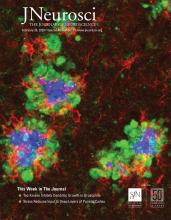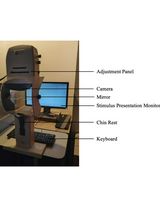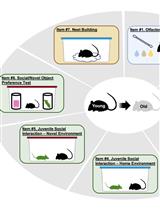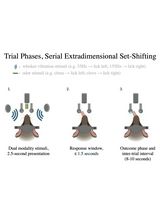- EN - English
- CN - 中文
Multiple Simultaneous Acute Stresses in Mice: Single or Repeated Induction
小鼠多重同时急性应激:单次或重复诱导
发布: 2020年08月05日第10卷第15期 DOI: 10.21769/BioProtoc.3699 浏览次数: 5998
评审: Soyun KimHSIU CHUN CHUANGMohammed Mostafizur Rahman
Abstract
Stress is crucial to the survival of an organism, but excessive stress can lead to psychological disorders including depression, anxiety, substance abuse, and suicidality. The prevailing notion is that chronic stress promotes adverse outcomes on brain and body health, whereas acute stressors are generally benign. Notably, acute events such mass shootings or natural disasters are now emerging as significant sources of cognitive and emotional problems including post-traumatic stress disorder (PTSD). These events are characterized by the simultaneous occurrence of physical, emotional, and social stresses, which last minutes to hours. Hence, there is a need to model such multiple concurrent acute stresses (MAS) to uncover the mechanisms by which they lead to profound adverse outcomes. The MAS paradigm described here involves simultaneously exposing a rodent to several different stressors including restraint, crowding, and jostling alongside peers in a brightly lit and very noisy environment. Moreover, the MAS paradigm can be used once or imposed repeatedly to emulate complex, repeated modern life stresses, advancing our mechanistic understanding of consequent mental and cognitive impairments.
Keywords: Acute stress (急性应激)Background
Stress is common and inevitable. Severe or chronic stress can result in an array of cognitive, emotional, and physical problems. To understand the molecular, cellular, and physiological underpinnings of stress and its influence on brain function, stress must be modeled in the laboratory. It is conventionally accepted that chronic stress leads to adverse health outcomes while acute stress can be benign or advantageous. For example, chronic stress induced by unpredictable intermittent restraint impaired spatial memory (Peay et al., 2020), whereas one hour of acute restraint stress enhanced novel object recognition memory in male rats (Brivio et al., 2020). However, previous approaches to acute stress typically imposed a single or “simple” stress. Notably, acute stressful life events such as mass shootings or natural disasters may only last minutes to hours, yet consist of physical, emotional, and social stresses occurring at the same time. These events are now being shown to provoke negative long-term outcomes such as PTSD in a significant number of individuals (North et al., 1994; Lowe and Galea, 2017; Musazzi et al., 2017; Novotney, 2018). Therefore, there is an unmet need to model MAS in the laboratory to discover the mechanisms by which they promote negative outcomes.
We have developed a multiple concurrent acute stresses (MAS) paradigm (Figure 1) to examine cognitive and “emotional” impairments resulting from these types of stress (Maras et al., 2014). MAS utilizes mild to moderate stressors: restraint, awareness of peer discomfort, bright lighting, loud noise, and jostling, but delivers these to the animal simultaneously within as little as one hour. MAS lasting two-hours has lasting impact on memory and hippocampal spine integrity, assessed via spatial memory tests, slice physiology, and several quantitative methods to determine spine density and loss (Maras et al., 2014; Chen et al., 2016). For example, adult male mice subjected to restraint only stress or noise only stress, paradigms that are more commonly used in labs to model acute stress, did not have these profound memory deficits. MAS activates additional and distinct brain networks compared to single acute stressors, promoting cross-correlated activation of amygdala and the bed nucleus of the stria terminalis (Maras et al., 2014). These results highlight that MAS may employ different mechanisms to impact brain function compared to commonly utilized acute stressors. Thus, MAS may provide a more optimal model for concurrent acute life stresses that produce profound, negative outcomes.
In contrast to simple acute stress, chronic stress may promote neuropsychiatric pathology. Several protocols have been developed to model chronic stress in rodents. Repeated physical restraint in a conical tube or similar restraining device is a popular paradigm (Kim and Han, 2006). To avoid potential habituation to a single stressor over an extensive period of time, the unpredictable chronic mild stress procedure [UCMS or CUMS, with variations including chronic unpredictable stress (CUS or UCS), chronic mild stress (CMS), and chronic variable stress (CVS)] subjects rodents to several weeks of various stressors, such as noise, restraint, bedding deprivation, and light cycle disruption (Willner, 1997 and 2017; Burstein and Doron, 2018). While this protocol is widely used, it is quite labor intensive and some strains of mice, including the commonly used C57BL/6 strain, can be resistant to the effects of UCMS unless the duration of the protocol is greatly extended (Monteiro et al., 2015).
To circumvent issues with some chronic stress protocols and also engage the same networks as those activated in a single exposure to MAS, the MAS paradigm has been adapted to chronic applications. Repeated multiple concurrent stressors (RMS) for one hour a day across 10 days in adolescent, male C57BL/6 mice induce the loss of sensory and retrosplenial cortical input to the posterior parietal cortex as well as disrupt working memory performance (Libovner et al., 2020). This extensive circuit disruption is not observed in mice subjected to the same amount of restraint only stress, highlighting the specific mechanisms engaged during exposure to MAS.
The MAS protocol facilitates the investigation of the consequences of stress that may be limited in duration, such as natural disasters or mass shootings. This paradigm can further be adapted to chronic applications, capitalizing on the network activation of a single exposure that may not be similarly engaged in other chronic stress paradigms. Furthermore, this protocol is technically simple and titratable, promoting robust and reproducible results.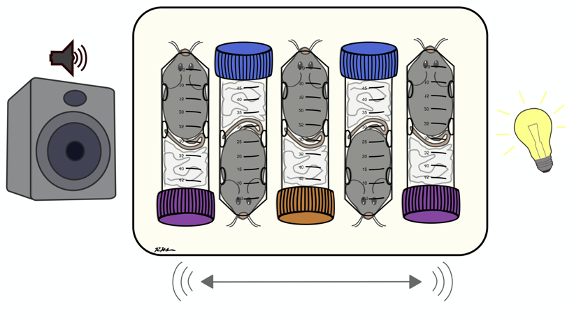
Figure 1. Multiple Concurrent Acute Stresses Paradigm. Mice are subjected to physical, social, and emotional stresses concurrently through restraint, crowding, jostling, loud noise (e.g., music or random, high frequency beeps), and bright lights.
Materials and Reagents
- Restraint tubes: 50 ml conical tubes (approximately 30 mm diameter 115 mm length) (Corning®, catalog number: 430921 , others) with openings to permit breathing (see Procedure)
- Paper towels (Scott® Multi-Fold Towels, catalog number: 0 1804 , others)
- C57BL/6 adolescent or adult mice (see Notes on “Variations of the MAS protocol”)
- 95% ethanol for cleaning
Equipment
- Multipurpose rotator/orbital shaker (Thermo Scientific, model: 2314 ) or benchtop laboratory rocker (IBI Scientific ROCAA115S Hi/Lo Profile Rocker, 115V, amazon.com)
- Stereo system (Sony CFD-510 Radio Cassette-Corder with Mega Bass, others) or audio amplifier (e.g., Stereo 20W Class D Audio Amplifier, MAX9744, Adafruit product ID: 1752 but any audio amplifier will work), high frequency response speakers (e.g., High Performance Piezo Tweeters for Car Audio 1.5" 400 Watts 4 ohm Super High Frequency, amazon.com), and an Arduino UNO R3 board (Arduino, product code: 8058333490090) with 2 x 12 V power supply (12V 2A 24W AC DC Switching Power Supply Adapter, amazon.com)
- Audio in format compatible with stereo or Adruino code (provided)
- 1-2 empty mouse housing cages or plastic box that will fit on rotator (20 cm width x 36 cm length x 13 cm height or similar)
- Scale with tenth of a gram precision (Sartorius, model: PT600 , others)
- Decibel meter (or equivalent cellular phone application)
- Ear plugs (3MTM, catalog number: 70005103141 , others)
- C-Clamp or vise to hold conical tube
- Power drill with bits (up to ¼ in.)
- Sandpaper
- Jumper cables for Arduino wiring (EDGELEC 120pcs Breadboard Jumper Wires, amazon.com)
- USB cable (USB Data Sync Cable for Arduino UNO/Arduino Mega 2560 Rev 3 R3 Microcontroller, amazon.com)
- Power strip (AmazonBasics 6-Outlet Surge Protector Power Strip, amazon.com)
- LED light source (e.g., RGB LED Spotlight, LOFTEK 10W, amazon.com)
Procedure
文章信息
版权信息
© 2020 The Authors; exclusive licensee Bio-protocol LLC.
如何引用
Readers should cite both the Bio-protocol article and the original research article where this protocol was used:
- Hokenson, R. E., Oijala, M., Short, A. K., Bolton, J. L., Chen, Y., Molet, J., Maras, P. M., Baram, T. Z. and Lur, G. (2020). Multiple Simultaneous Acute Stresses in Mice: Single or Repeated Induction. Bio-protocol 10(15): e3699. DOI: 10.21769/BioProtoc.3699.
- Libovner, Y., Fariborzi, M., Tabba, D., Ozgur, A., Jafar, T. and Lur, G. (2020). Repeated exposure to multiple concurrent stresses induce circuit specific loss of inputs to the posterior parietal cortex. J Neurosci 40(9): 1849-1861.
分类
神经科学 > 行为神经科学 > 实验动物模型
神经科学 > 行为神经科学 > 认知
您对这篇实验方法有问题吗?
在此处发布您的问题,我们将邀请本文作者来回答。同时,我们会将您的问题发布到Bio-protocol Exchange,以便寻求社区成员的帮助。
Share
Bluesky
X
Copy link


